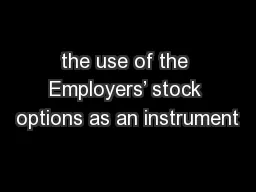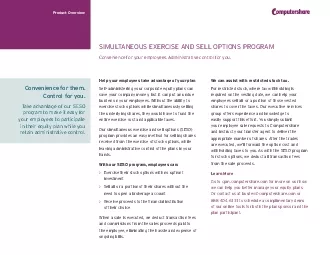PPT-the use of the Employers’ stock options as an instrument
Author : olivia-moreira | Published Date : 2016-04-04
behaviour analysis based on academic librarians perceptions of the instrument Alexei Oulanov PhD MBA MSLIS Medgar Evers College City University of New York USA
Presentation Embed Code
Download Presentation
Download Presentation The PPT/PDF document "the use of the Employers’ stock option..." is the property of its rightful owner. Permission is granted to download and print the materials on this website for personal, non-commercial use only, and to display it on your personal computer provided you do not modify the materials and that you retain all copyright notices contained in the materials. By downloading content from our website, you accept the terms of this agreement.
the use of the Employers’ stock options as an instrument: Transcript
Download Rules Of Document
"the use of the Employers’ stock options as an instrument"The content belongs to its owner. You may download and print it for personal use, without modification, and keep all copyright notices. By downloading, you agree to these terms.
Related Documents














